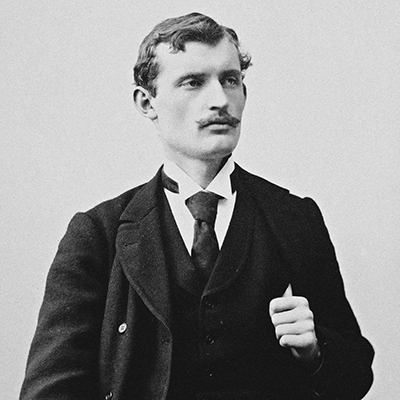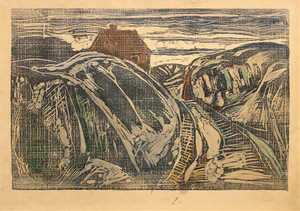EDVARD MUNCH (1863-1944)
 Munch was born into a middle-class family that was plagued with ill health. His mother died when he was five, his eldest sister when he was 14, both of tuberculosis; Munch eventually captured the latter event in his first masterpiece, The Sick Child (1885–86). Munch’s father and brother also died when he was still young, and another sister developed mental illness. “Illness, insanity, and death,” as he said, “were the black angels that kept watch over my cradle and accompanied me all my life.”
Munch was born into a middle-class family that was plagued with ill health. His mother died when he was five, his eldest sister when he was 14, both of tuberculosis; Munch eventually captured the latter event in his first masterpiece, The Sick Child (1885–86). Munch’s father and brother also died when he was still young, and another sister developed mental illness. “Illness, insanity, and death,” as he said, “were the black angels that kept watch over my cradle and accompanied me all my life.”
Munch’s own deeply original style crystallized about 1892. The flowing, tortuous use of line in his new paintings was similar to that of contemporary Art Nouveau, but Munch used line not as decoration but as a vehicle for profound psychological revelation. The outraged incomprehension of his work by Norwegian critics was echoed by their counterparts in Berlin when Munch exhibited a large number of his paintings there in 1892 at the invitation of the Union of Berlin Artists. The violent emotion and unconventional imagery of his paintings, especially their daringly frank representations of sexuality, created a bitter controversy. Critics were also offended by his innovative technique, which to most appeared unfinished. The scandal, however, helped make his name known throughout Germany, and from there his reputation spread farther. Munch lived mainly in Berlin in 1892–95 and then in Paris in 1896–97, and he continued to move around extensively until he settled in Norway in 1910.
Munch suffered a nervous breakdown in 1908–09, and afterward his art became more positive and extroverted without recovering its previous intensity. Among the few exceptions is his haunting Self-Portrait: The Night Wanderer (c. 1930), one of a long series of self-portraits he painted throughout his life. An especially important commission, which marked the belated acceptance of his importance in Norway, was for the Oslo University Murals (1909–16), the centrepiece of which was a vast painting of the sun, flanked by allegorical images. Both landscapes and men at work provided subjects for Munch’s later paintings. Yet it was principally through his work of the 1890s, in which he gave form to mysterious and dangerous psychic forces, that he made such a crucial contribution to modern art. In 1937 his work was included in the Nazi exhibition of “degenerate art.” Upon his death, Munch bequeathed his estate and all the paintings, prints, and drawings in his possession to the city of Oslo, which erected the Munch Museum in 1963. Many of his finest works are in the National Gallery in Oslo.
(Britannica)

